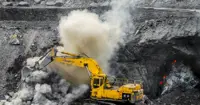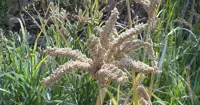India looks to Australia to address water crisis
15 Apr 2013
India is looking to Australia's experience in managing the water of the Murray-Darling Basin to help address one of the world's most serious looming water crises.
According to The Canberra Times, India, densely populated and overwhelmingly agricultural, faced a serious water shortage with a growing population, unreliable monsoon rainfall and demands of industrialisation, all of which combinine to deplete an already-scarce resource.
According to a recent report by McKinsey and Company, by 2030, India's demand for water would be more than double its supply. To add to its water woes, many of India's most major rivers, such as the Ganges and Yamuna, are toxically polluted in stretches and major cities often run dry of drinking water.
In a development promising better management of water resources, a memorandum of understanding has been signed between the eWater agency of the Australian government and the government of India, that would allow the Indian Institute of Technology to share eWater's hydrological modeling platform, Source.
Australia developed the Source software over 15 years at a cost of over $300 million, as a modelling tool aimed at improving the management of Australia's major river system, the 3375 km Murray-Darling Basin.
eWater's chief executive Gary Jones, who was in Delhi said there were similarities between India's river basins and the Murray-Darling experience, including competing demands for water from different sectors, conflicts between states over water rights, high rainfall variability, and the effects of climate change.
He added all these factors presented great challenges for India as India tried to sustain and manage its water resources.
However, IIT delhi professor Ashvin Gosain, who is slated to head the IIT's Source programme pointed out that there were differences too.
According to Gosain, the ground realities could be totally different, adding that in the case of Australia, one talked of a farmer who had about 1500 hectares; but an Indian farmer might have half a hectare, with an entirely different set of problems.
Gosain says mechanisms like a water pricing, which had been used successfully in the Murray-Darling to return water to the environment would not work in India, as those who needed it simply could not afford to pay, but at the same time they could also not be excluded.
According to Gosain, Source would allow models for India's future water use and needs to be built, to determine where water should be allocated.































